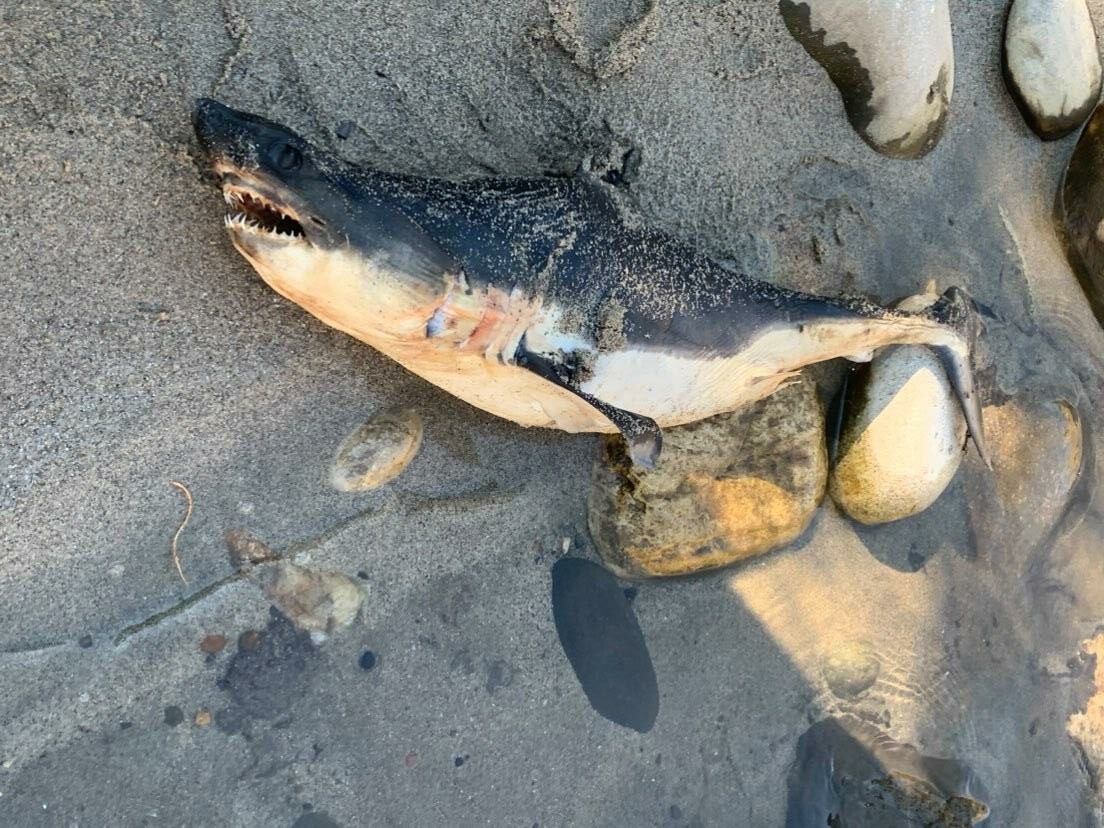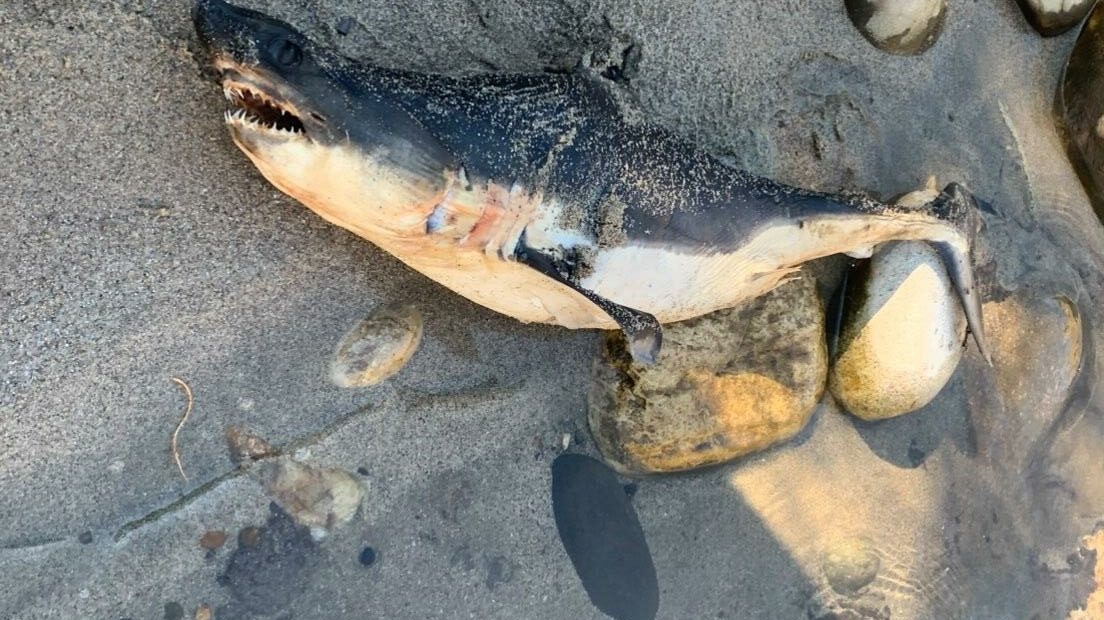
Shark sighting in Idaho remains a mystery
Listen
(Runtime 3:53)
Read
Local river guide Rob Winters was one of the first people to find the salmon shark on Shorts Bar, one of the the most popular beaches in Riggins.
“I think it was a classic prank, and I do support pranks,” said Winters.
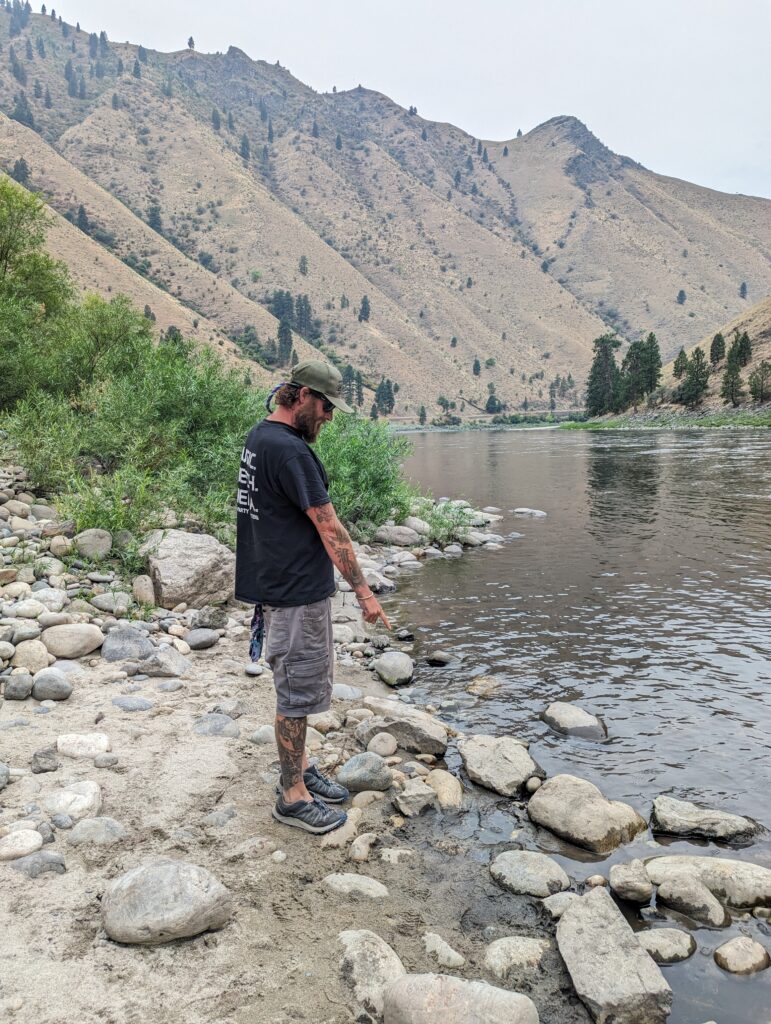 Local River guide Rob Winters points to where he first saw the dead salmon shark on Shorts Bar. (Credit: Lauren Paterson / NWPB)
Local River guide Rob Winters points to where he first saw the dead salmon shark on Shorts Bar. (Credit: Lauren Paterson / NWPB)
The story of a shark spotted in Idaho spread like wildfire, said Winters.
Rozita Bailey is a bartender at the Seven Devils Saloon in downtown Riggins.
“It’s everywhere,” said Bailey. “Last night, someone was like, ‘let’s go jump in the river’ and someone was like, ‘no, we can’t, there’s sharks there!’”
Bailey works with Taylie Hopkins, a local teacher who waitresses in the summer at the Saloon.
“As the day went on, customers were coming into the restaurant and they were like, ‘did you hear about the shark? Did you hear about the shark?’”
While some people were convinced the shark had really been swimming in the Salmon River, “some people were like, ‘It’s gotta be a prank,’” said Hopkins.
The sighting happened to coincide with an annual University of Idaho sorority raft trip, where dozens of college students voyage our onto the river before school starts.
“We were doing a big sorority trip,” said Winters. “We came down here in the morning to put the boats in, and it was just laying there dead.”
Salmon sharks are found in the North Pacific oceans often in the coastal waters of Washington and Oregon.
But in mid-August, Idaho Fish and Game started getting calls when people found one on the shores of the Salmon River.
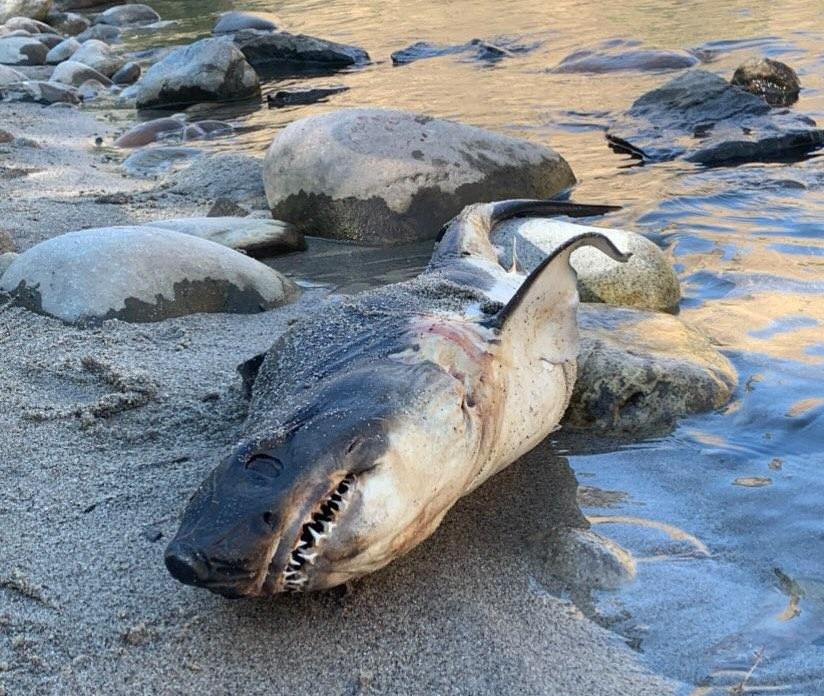 “First smallmouth bass, then walleye, and now SALMON SHARKS! When are our salmon and steelhead going to catch a break?” said Joe DuPont in a press release from Idaho Fish and Game published August 16. (Credit: Joe DuPont / Idaho Fish & Game)
“First smallmouth bass, then walleye, and now SALMON SHARKS! When are our salmon and steelhead going to catch a break?” said Joe DuPont in a press release from Idaho Fish and Game published August 16. (Credit: Joe DuPont / Idaho Fish & Game)
“We thought it was a sturgeon because they look like sharks,” said Joe DuPont, a fisheries manager with Idaho Fish and Game. “But then, with that many calls, an officer went down there and took some pictures and sent it to us and sure enough, it was a shark.”
DuPont’s press release about the shark went viral.
“We knew immediately it was a hoax, because salmon sharks can’t live in freshwater. It’s a long migration to get here through a bunch of dams, which is impossible,” said DuPont.
Even DuPont’s wife was not entirely convinced there weren’t sharks in the river.
“My wife was even saying, ‘well, how do you know [the shark] couldn’t have evolved to do that? Other animals evolve…’ But it doesn’t happen that fast,’” said DuPont.
It turns out, sharks have lived in Idaho before.
During the Permian period 270 million years ago, North American looked completely different than it does today.
“Most of Idaho, but particularly southeastern Idaho, was shallow ocean,” said Shawn Willsey, a geology professor at the College of Southern Idaho.
“There were these shallow seaways, and one of the organisms that inhabited those was a unique type of shark,” said Willsey.
That shark was called helicoprion.
Dr. Leif Taponila is a paleontologist at Idaho State University who studies helicoprion sharks. He’s been featured on Shark Week for Discovery Canada and an episode of River Monsters.
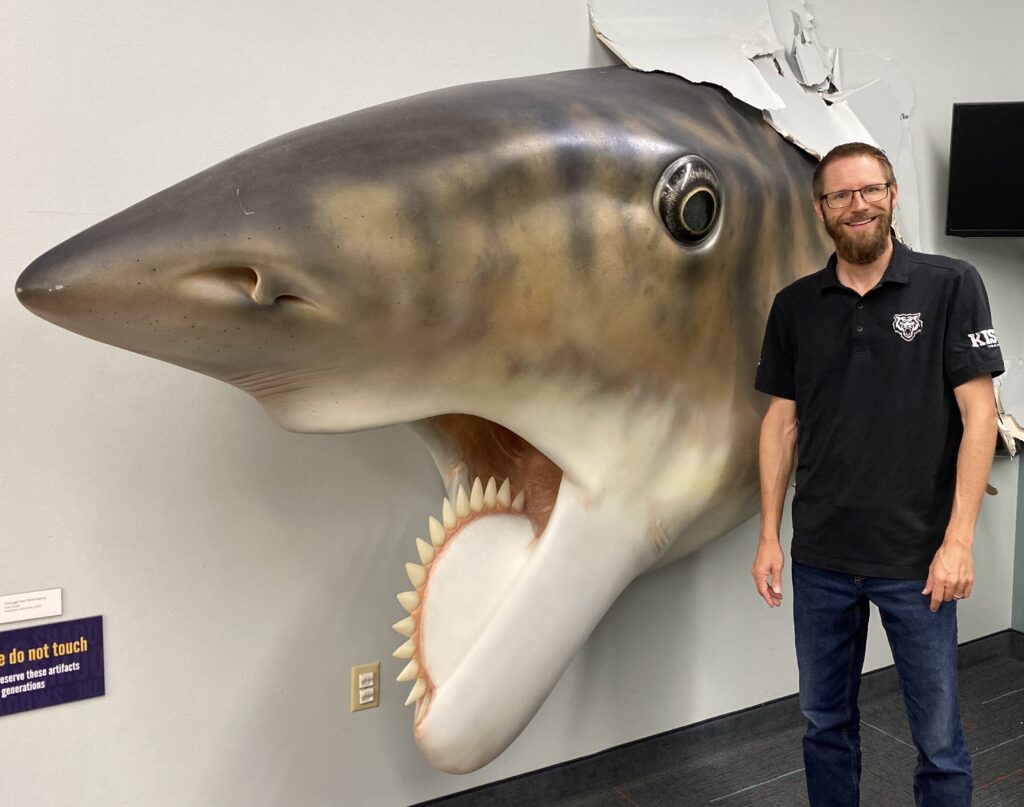
Dr. Leif Tapanila with a 35 foot helicoprion shark, the largest predator of its time. (Credit: Idaho Museum of Natural History)
While the helicoprion shark remains are found all over the world, “most of them are found here in southeast Idaho,” said Taponila.
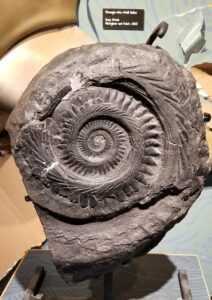
Helicoprion fossil found in Idaho. (Credit: Idaho Museum of Natural History)
The phosphate mines between Pocatello and Soda Springs are constantly digging up phosphate rocks to turn into fertilizer.
“Occasionally they notice these really distinctive spiral teeth coming out of the ground,” said Taponila.
Because so many of these fossils have been dug up by the nearby mines, the Idaho Museum of Natural History on the ISU campus has the largest collection of these ancient sharks in the world, said Tapanila.
The name of these sharks is Latin. Helico means “spiral,” and prion means “saw.”
When you look at the shark’s jaw, “It kind of looks like a circular saw blade, except it’s a spiral. And the teeth on them are five inches, six inches tall, from root to tip,” said Tapanila. “They’re almost the span of your hand.”
The slicing teeth worked by rotating backward, swinging at a 30 degree angle to cut through the meat of their prey.
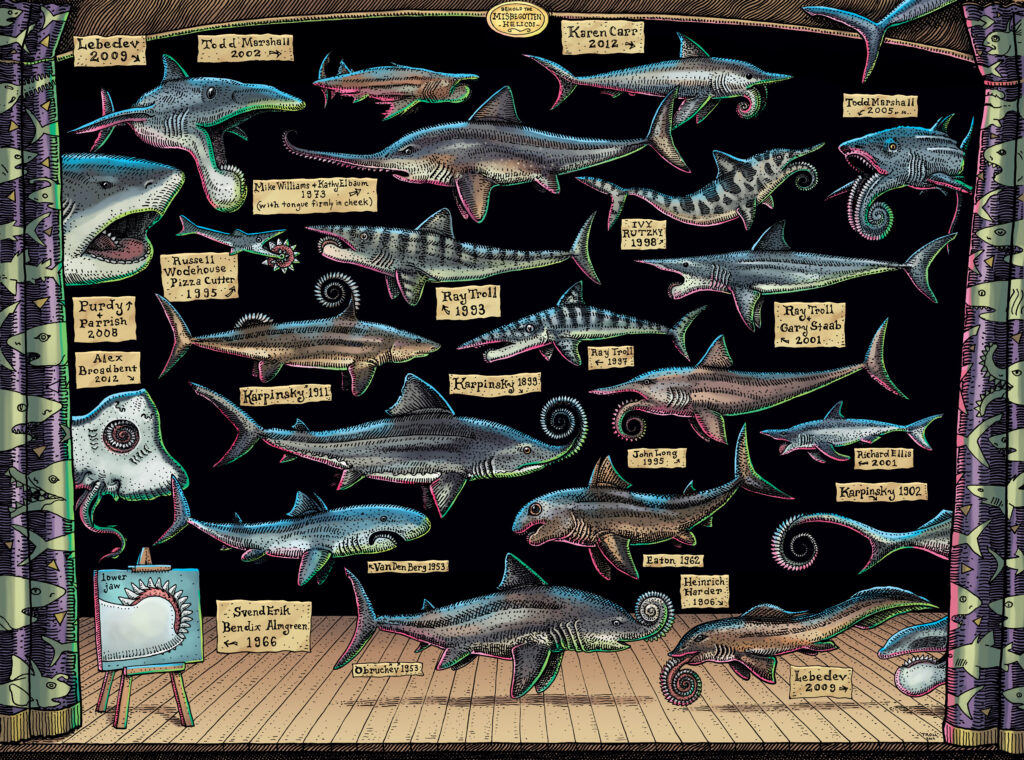
When they first found the fossils, scientists struggled to imagine how these teeth might have fit into the ancient shark. A poster shows some of the initial ideas. (Credit: Ray Troll)
At the time it was alive, helicoprion was the largest animal to have ever evolved on the planet, said Tapanila. “The top apex predator was bigger than anything on land or in the sea at that time,” he said.
Although no one needs to worry about sharks in Idaho waters today, you might want to look around next time you’re at the beach.
“I think somebody brought [the shark] or had it in their freezer or something,” said Hopkins. “Everyone will remember this for the rest of their lives. The day of the shark in Riggins on Shorts Bar.”

